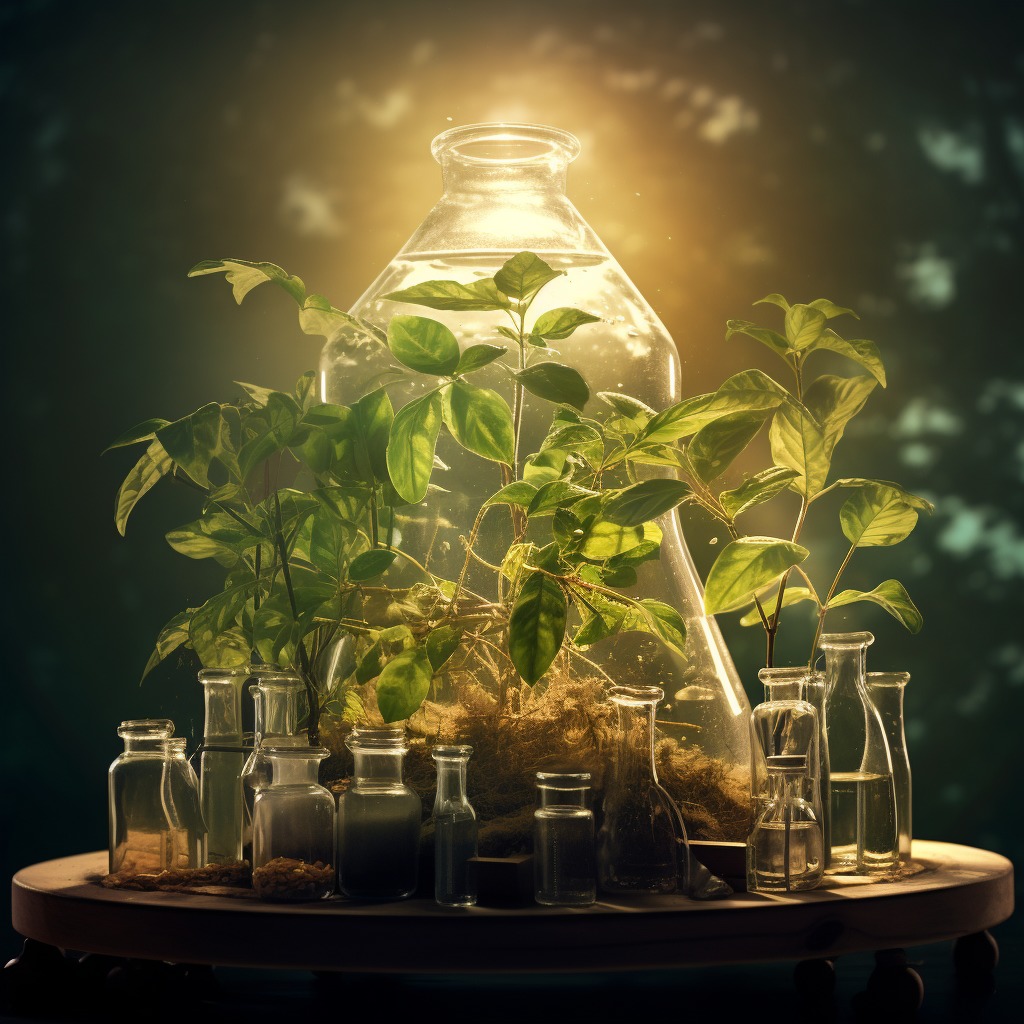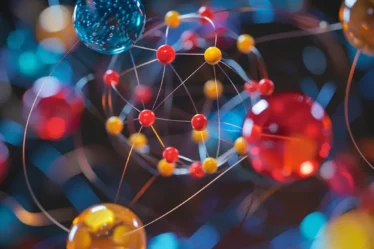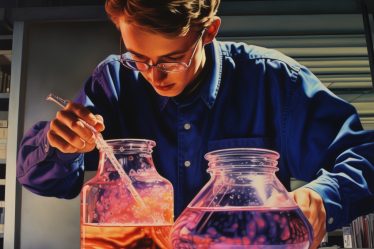
Welcome to an exploration of one of nature’s most fascinating processes: photosynthesis. This intricate biochemical phenomenon is the cornerstone of life on Earth, converting sunlight into the chemical energy that fuels our planet. Whether you’re a student delving into the subject, a teacher seeking to inspire the next generation, or a tutor aiming to clarify complex concepts this comprehensive guide is designed for you.
Check out 8 Exciting Science Experiments for Kids.
Introduction to the Chemistry Behind Photosynthesis
Photosynthesis is a cornerstone of life on Earth, a biochemical process that has far-reaching implications for everything from the air we breathe to the food we eat. Yet, understanding the chemistry behind this essential process can be daunting. This guide aims to demystify the intricate chemical reactions that power photosynthesis, turning sunlight into life-sustaining energy.
We’ll delve into the core components, such as the role of chlorophyll in absorbing light energy, the light-dependent and light-independent reactions, and the chemical equations that summarize these processes. Whether you’re a student, a teacher, or simply someone curious about the natural world, this guide offers a comprehensive overview designed to enhance your understanding.
If you find the subject matter challenging or wish to deepen your understanding, don’t hesitate to seek out additional help. A specialized chemistry tutor can provide one-on-one guidance, helping you navigate the complexities of photosynthesis. Tutors can offer personalized explanations, practice problems, and even real-world applications to make the subject come alive.
Discover your ideal chemistry tutor at meet’n’learn and skyrocket your understanding to new heights!
What is Photosynthesis?
Photosynthesis is a biological marvel that is the foundation for nearly all life forms on Earth. It’s a process that occurs in plants, algae, and some bacteria, converting light energy, usually from the sun, into chemical energy stored in molecules like glucose. This energy fuels various cellular activities, making photosynthesis a critical component of Earth’s energy cycle.
At its core, photosynthesis is a series of chemical reactions. Light energy is captured by pigments, primarily chlorophyll, in the chloroplasts of plant cells. This energy is then used to convert carbon dioxide and water into glucose and oxygen. The process can be summarized by the following equation:
6CO2 + 6H2O + light energy → C6H12O6 + 6O2
Understanding photosynthesis is not just an academic exercise; it has real-world implications. For instance, the oxygen we breathe is a byproduct of this process, and the food we eat is ultimately derived from glucose produced during photosynthesis. As we delve deeper into the chemistry of photosynthesis, you’ll gain insights into how this process is central to life as we know it.
Struggling with biology topics? Explore our extensive collection of biology educational blog posts designed to simplify complex concepts for you. Whether it’s photosynthesis, the intricacies of green algae, understanding bacteria and viruses, or delving into the fascinating world of genetics and cells, our resources have got you covered. Expand your knowledge and enhance your learning journey with us today.
The Core Chemical Reactions in Photosynthesis
Understanding the chemistry of photosynthesis requires a deep dive into its core chemical reactions. These reactions occur in two main stages: the light-dependent reactions and the light-independent reactions, commonly known as the Calvin Cycle. Both stages are intricately linked, converting light energy into chemical energy stored in glucose.
Light-Dependent Reactions
The light-dependent reactions serve as the initial phase and occur in the thylakoid membranes of the chloroplasts. During this stage, light energy is absorbed by chlorophyll and other pigments. The primary chemical reactions involved are as follows:
2H2O + 2NADP+ + 3ADP + 3Pi → O2 + 2NADPH + 3ATP
This equation represents the conversion of water and NADP+ into oxygen, adenosine triphosphate (ATP), and nicotinamide adenine dinucleotide phosphate (NADPH). These molecules act as energy carriers and are crucial for the Calvin Cycle.
Light-Independent Reactions (Calvin Cycle)
The Calvin Cycle, which takes place in the stroma of the chloroplasts, is independent of light. It uses the ATP and NADPH produced in the light-dependent reactions to convert carbon dioxide and water into glucose. The key chemical reactions in this stage are summarized by the following equation:
3CO2 + 9ATP + 6NADPH → C3H6O3 + 9ADP + 8Pi + 6NADP+ + 3H2O
This equation outlines how carbon dioxide, ATP, and NADPH are converted into a three-carbon sugar, ADP, inorganic phosphate, and NADP+. This is the stage where the actual ‘synthesis’ in photosynthesis occurs, as complex sugars like glucose are eventually formed from these simpler substances.
By understanding these core chemical reactions, you’ll gain a comprehensive view of how photosynthesis is a multi-step process that transforms light energy into life-sustaining chemical energy.
| Aspect | Light-Dependent Reactions | Light-Independent Reactions |
|---|---|---|
| Location | Thylakoid Membranes | Stroma |
| Key Molecules Produced | ATP, NADPH | Glucose |
| Requires Light | Yes | No |
By understanding these core chemical reactions, you’ll gain a comprehensive view of how photosynthesis is a multi-step process that transforms light energy into life-sustaining chemical energy.
Discover the fundamentals of Electrochemistry and Redox Reactions.
Not Just for Plants: Photosynthesis in Other Organisms
While plants are the most well-known performers of photosynthesis, they are not the only organisms capable of this incredible feat. Various other life forms, including certain types of bacteria and even some animals, also engage in photosynthesis to some extent.
Photosynthetic Animals
Yes, you read that correctly—some animals can perform photosynthesis. One remarkable example is the emerald green sea slug, which incorporates algae into its cells and utilizes its photosynthetic capabilities. Another example is the pea aphid, which can produce its own carotenoids and engage in photosynthesis.
Photosynthetic Bacteria
Photosynthetic bacteria, such as cyanobacteria, have been performing photosynthesis for billions of years, long before plants even existed. These microorganisms are crucial for various ecosystems and contribute significantly to the Earth’s oxygen levels.
Understanding that photosynthesis is not exclusive to plants broadens our perspective on this vital process and its role in sustaining diverse life forms.
The basic of Polymers.
Enhancing Photosynthesis: The Role of Technology and Agriculture
Photosynthesis is not just a subject of academic interest; it has practical applications that impact our daily lives, particularly in technology and agriculture. Advancements in these fields aim to optimize the efficiency of photosynthesis, thereby increasing crop yields and promoting sustainable farming.
The Green Revolution
The Green Revolution of the mid-20th century was a pivotal moment in agriculture. It introduced new technologies, fertilizers, and high-yield crop varieties, significantly increasing food production. Many of these advancements were designed to enhance the photosynthetic efficiency of crops, allowing for greater yields with fewer resources.
Genetic Engineering
Modern science has taken it a step further with genetic engineering. By manipulating the genes responsible for photosynthesis, scientists aim to create plants that can perform photosynthesis more efficiently, producing more food while using less water and fertilizer.
Such advancements promise to address some of the world’s most pressing challenges, including food security and environmental sustainability. By understanding the chemistry of photosynthesis, we can better appreciate the potential impact of these technological and agricultural innovations.
Introduction to the Periodic Table and how to memorize it.
The ABCs of Photosynthesis: A Glossary of Terms
As we navigate the intricate photosynthesis world, we must familiarize ourselves with key terms and concepts. This glossary serves as a quick reference guide to help you better understand the terminology used in discussions about photosynthesis.
- ATP (Adenosine Triphosphate): A molecule that serves as an energy carrier in cellular processes.
- Calvin Cycle: The set of light-independent reactions in photosynthesis that produce glucose.
- Chlorophyll: The green pigment in plants that absorbs light energy for photosynthesis.
- Chloroplast: The organelle in plant cells where photosynthesis occurs.
- Cyanobacteria: Photosynthetic bacteria that contribute to oxygen production.
- NADPH (Nicotinamide Adenine Dinucleotide Phosphate): Another molecule that serves as an energy carrier in cellular processes.
- Stroma: The fluid-filled space within the chloroplast where the Calvin Cycle occurs.
- Thylakoid: The membrane-bound compartments inside chloroplasts where light-dependent reactions take place.
This glossary is a valuable resource for students, teachers, and anyone interested in the chemistry of photosynthesis. It provides a foundation for understanding the more complex aspects of this vital process.
What are Functional Groups in organic chemistry?
How to Study Photosynthesis Effectively
Understanding the chemistry of photosynthesis can be daunting, especially for those new to the subject. However, effective study techniques can make a significant difference. This section offers some practical advice on how to approach learning about this complex biological process.
- Start with the Basics: Familiarize yourself with fundamental concepts like chlorophyll, ATP, and the Calvin Cycle before diving into more complex topics.
- Use Visual Aids: Diagrams, flowcharts, and videos can help you visualize the steps involved in photosynthesis.
- Practice Problems: Work through exercises that require you to apply your knowledge, such as balancing the photosynthesis equation.
- Consult Multiple Sources: Don’t rely solely on textbooks; explore scientific journals, online resources, and even educational apps for a well-rounded understanding.
- Seek Expert Guidance: If you find certain concepts challenging, consider consulting a chemistry tutor for personalized assistance.
By employing these study techniques, you’ll be better equipped to understand the intricacies of photosynthesis. Whether you’re a student, teacher, or tutor, these tips can enhance your grasp of this essential biological process.
How is a Covalent Bond Formed, and how can we differentiate between Ionic and Covalent Bonds?
How is a Hydrogen Bond Formed?
The Role of Tutors in Understanding Photosynthesis
While textbooks and lectures provide a foundational understanding of the chemistry of photosynthesis, the role of a tutor can be invaluable in deepening this knowledge. Tutors offer personalized guidance, helping to clarify complex concepts and providing a tailored learning experience.
- Concept Clarification: Tutors can break down intricate chemical equations and stages of photosynthesis, making them easier to understand.
- Practical Application: Through hands-on exercises and real-world examples, tutors can demonstrate the relevance and applications of photosynthesis in everyday life.
- Study Techniques: Tutors can offer effective study strategies, such as how to approach chemical equations or how to visualize cellular processes, enhancing your overall understanding.
Looking for a chemistry tutor? Enter “chemistry tutor Glasgow” or “chemistry teacher Sheffield” on your preferred tutoring platform, such as meet’n’learn to find a teacher who can meet your specific needs.
If you thrive in group learning environments, search “chemistry classes London” or “chemistry lessons Manchester” online to discover local schools offering chemistry lessons.
Whether you’re a student grappling with the complexities of chemical reactions or a teacher looking for new ways to explain challenging topics, a tutor can provide the support and expertise needed to master the subject.
Final Thoughts: The Unseen Engine of Life
Photosynthesis is more than just a topic in a textbook; it’s the unseen engine that powers life on Earth. This complex biochemical process is at the heart of ecological balance and sustainability, from the oxygen we breathe to the food we eat. We’ve explored its core chemical reactions, occurrence across various species, and significance in technology and agriculture. We’ve also provided educational resources to help you delve deeper into this fascinating subject.
Whether you’re a student seeking to excel in your studies, a teacher aiming to inspire, or a tutor looking to clarify complex concepts, understanding the chemistry of photosynthesis is a journey worth embarking upon. We encourage you to continue exploring, questioning, and learning about this vital process that sustains life as we know it.
Ready to unravel The Greatest Discoveries in Biology?
Frequently Asked Questions
1. What is the primary function of photosynthesis?
The primary function is to convert light energy into chemical energy stored in glucose, which fuels various cellular activities.
2. Do all plants perform photosynthesis?
Most plants perform photosynthesis, but there are exceptions, like parasitic plants that do not have chlorophyll and rely on other plants for nutrients.
3. Can humans perform photosynthesis?
Humans cannot perform photosynthesis. They rely on the oxygen this process produces and the food chain for survival.
4. What are the main stages of photosynthesis?
The main stages are the light-dependent reactions and the light-independent reactions, also known as the Calvin Cycle.
5. What role do pigments play in photosynthesis?
Pigments like chlorophyll absorb light energy, which is then converted into chemical energy.
6. Is photosynthesis a single chemical reaction?
No, photosynthesis is a series of chemical reactions that take place in sequence to convert light energy into chemical energy.
7. How do environmental factors affect photosynthesis?
Factors such as light intensity, temperature, and carbon dioxide concentration can influence the rate of photosynthesis.
8. What are some applications of understanding photosynthesis in real life?
Understanding photosynthesis has applications in agriculture, biofuel production, and climate change.
Discover your ideal chemistry tutor at meet’n’learn and skyrocket your understanding to new heights!


